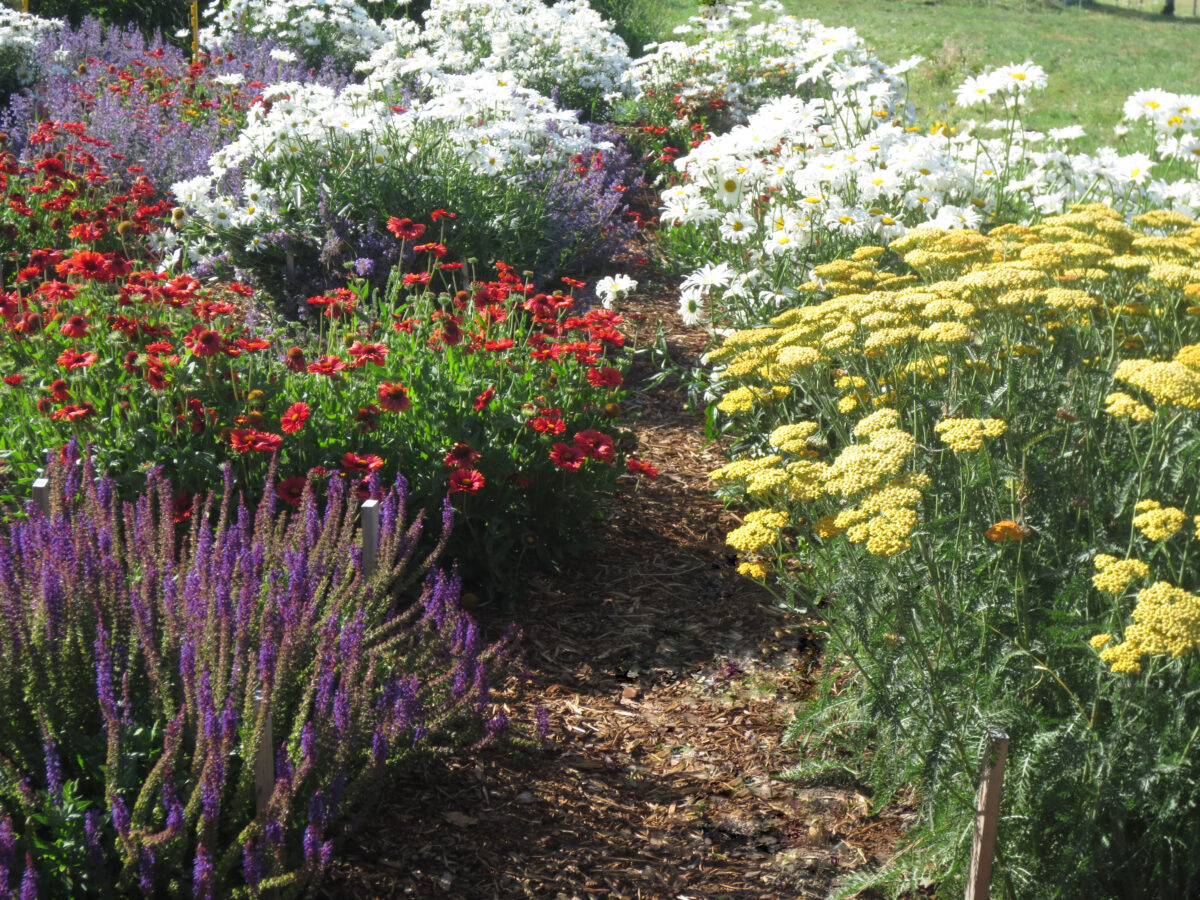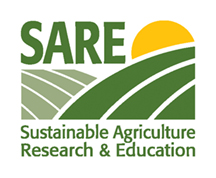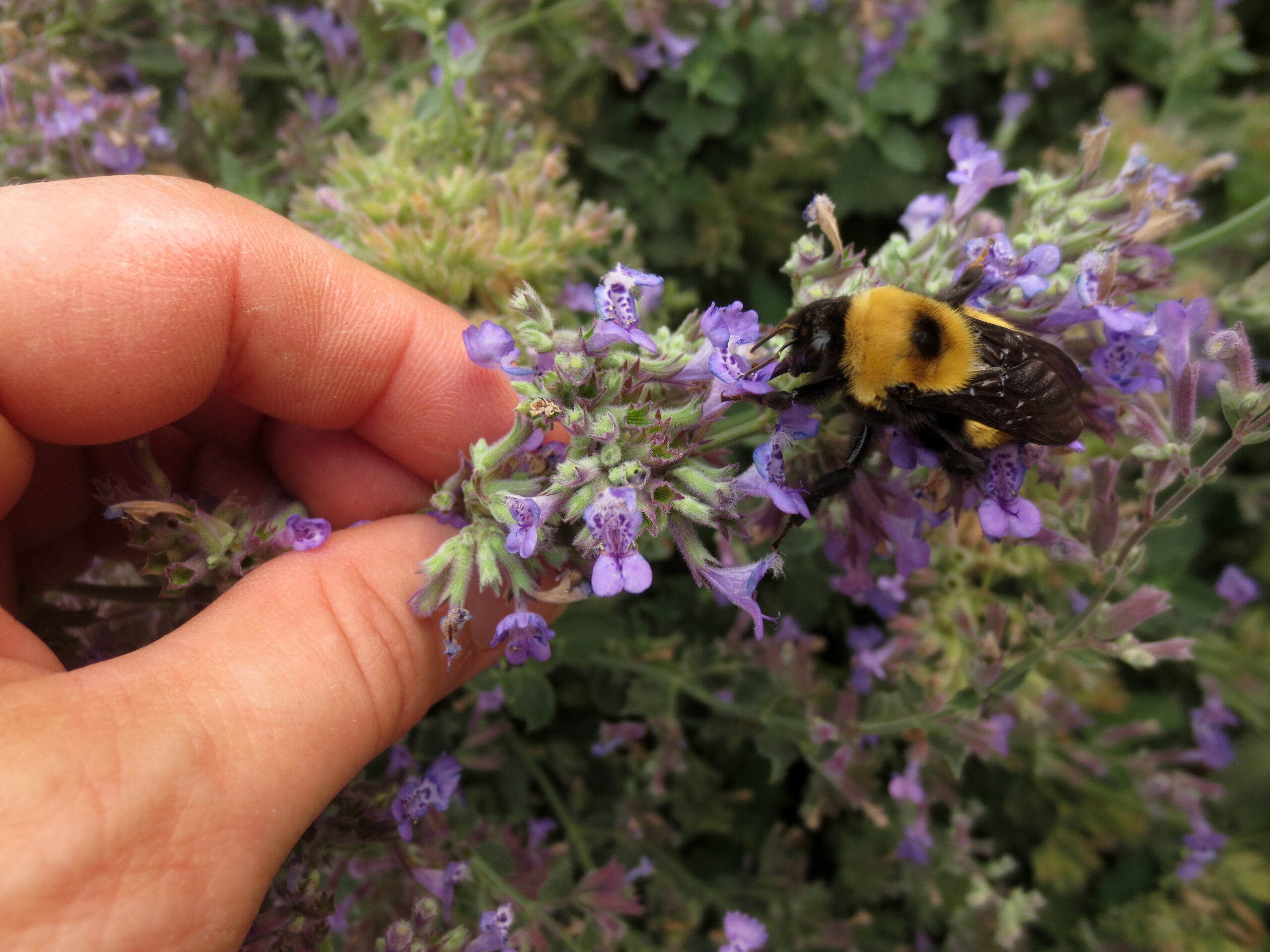
Time-lapse video surveillance pinpoints native pollinator's plant preferences, informing small but potent action to mitigate climate change impacts.
With entomology, I’m interested in all aspects of a whole ecological system. ... It’s been eye-opening that these different plants attract such a variety of insects, and that by combining different plants together we can tailor which insects we are attracting and feeding. If I’m in an area where the leaf cutter bee is in danger of going extinct, I can look for plants that will help this particular native bee.”
—Susan Fluegel, Rancher Grantee
Unanticipated Insights into Pollinator Plant Preferences
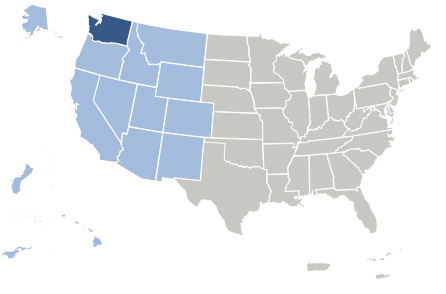
Region: Western
State: Washington
Grant Type: Farmer
Grant: FW18-030
SARE POST-PROJECT EVALUATION IMPACT MODEL
This evaluation impact model is specific to this SARE-funded project.
Sustainability Impacts
The project grantees and stakeholders contributed to the following sustainability impacts:
- Environmental sustainability impacts
- Social sustainability impacts
Grantee Indicators
(Farmer)
Project grantees (defined above) achieved sustainability impacts by engaging with the following indicators through involvement with project activities:
- Increased knowledge/skills
- Practice change
Stakeholder Indicators
(Growers)
Project stakeholders (defined above) achieved sustainability impacts by engaging with the following indicators through involvement with project activities:
- Increased knowledge/skills
- Practice change
The Success Story
Native pollinator populations are declining in key agricultural regions in the Western US, a problem likely to worsen due to climate change. In a project initially designed to determine how plant architecture influences beneficial insect abundance, Susan Fluegel identified hardy, easy-to-grow plant species that are attractive to specific pollinators. Key to the rigor of the study was her use of time lapse video surveillance to identify and count pollinators on numerous species simultaneously while controlling for confounding variables such as weather and temperature fluctuations throughout the day.
Learning How to Best Leverage Video to Capture Pollinator Data
I was totally underprepared for how many pollinators would be on each plant at any minute in time, especially if it was sunny. I had a naïve belief at the beginning that I was going to count the pollinators for each day. ... I picked a reference point and did it for half an hour, and it still took me all winter to do the counts, but it was totally worth it because I was seeing such cool things.”
—Susan Fluegel, Farmer Grantee

Grantee (Farmer) Highlights
In addition to gaining significant knowledge of the varied pollinators’ plant preferences, Fluegel acquired expertise using video surveillance to collect observational data. To protect the camera’s lens from excessive heat, a project collaborator designed a small “hat” to shade them from the sun. Fluegel learned that taking a snapshot every two seconds, rather than continuous video, made the batteries last longer without losing track of insects flying in and out of the frame. She also developed a method to outline same-sized sections of plants to monitor. Even in the small areas she observed, hundreds and sometimes thousands of pollinators visited during her observations. Fluegel demonstrated that just a few plants can meaningfully contribute to sustaining pollinator populations.
Grassroots Outreach Prompts Practice Change
I know of several different growers who looked through that booklet and actually bought native plants to put them on their property. Several people have come up to me and said, ‘Yep, we’ve tried it. It works and we’re happy with the results.’... Even one plant in your yard can make a big difference in combatting climate change.”
—Susan Flugel, Farmer Grantee
Other Stakeholder (Farmers) Highlights
Fluegel created and designed a graphically enhanced booklet to disseminate her study results. In addition to the SARE website, the booklet was posted on the Rural Roots website, a local community focused on delivering research- and practice-based information to sustainable farmers in the Pacific Northwest. Fluegel also presented the results at Rural Roots’ pollinator summits. While she has not systematically tracked uptake or application of the findings gleaned from the study, Fluegel is personally aware of local farmers who have used the information to select plantings for their land.
Test Plot Observations Are a Critical Outreach Technique
If COVID hadn't occurred, we would have been able to get a lot more people to look at what was going on. ... Pretty much the best way to sell this was having people wander around and look. ... A lot of that was totally derailed by not being able to get them out to the field to see it in its full glory when it was blooming”
—Susan Fluegel, Farmer Grantee
Sustainability Impacts
Climate change impacts the growing cycles of plant species that pollinators depend on for survival. The flowering plants Fluegel studied were selected intentionally for important traits. In addition to being low-effort, hardy, and drought tolerant, they have long blooming periods that enable them to serve as fallback species to others with more abbreviated blooming seasons due to global warming. By guiding growers in this manner, Fluegel is contributing to a grassroots environmental sustainability movement. Fluegel’s project has also contributed in a small way to social sustainability in her community. During the stressful times of the COVID pandemic, neighbors brought chairs and sat in the test garden where they were soothed by the peaceful buzzing sound of the pollinators.
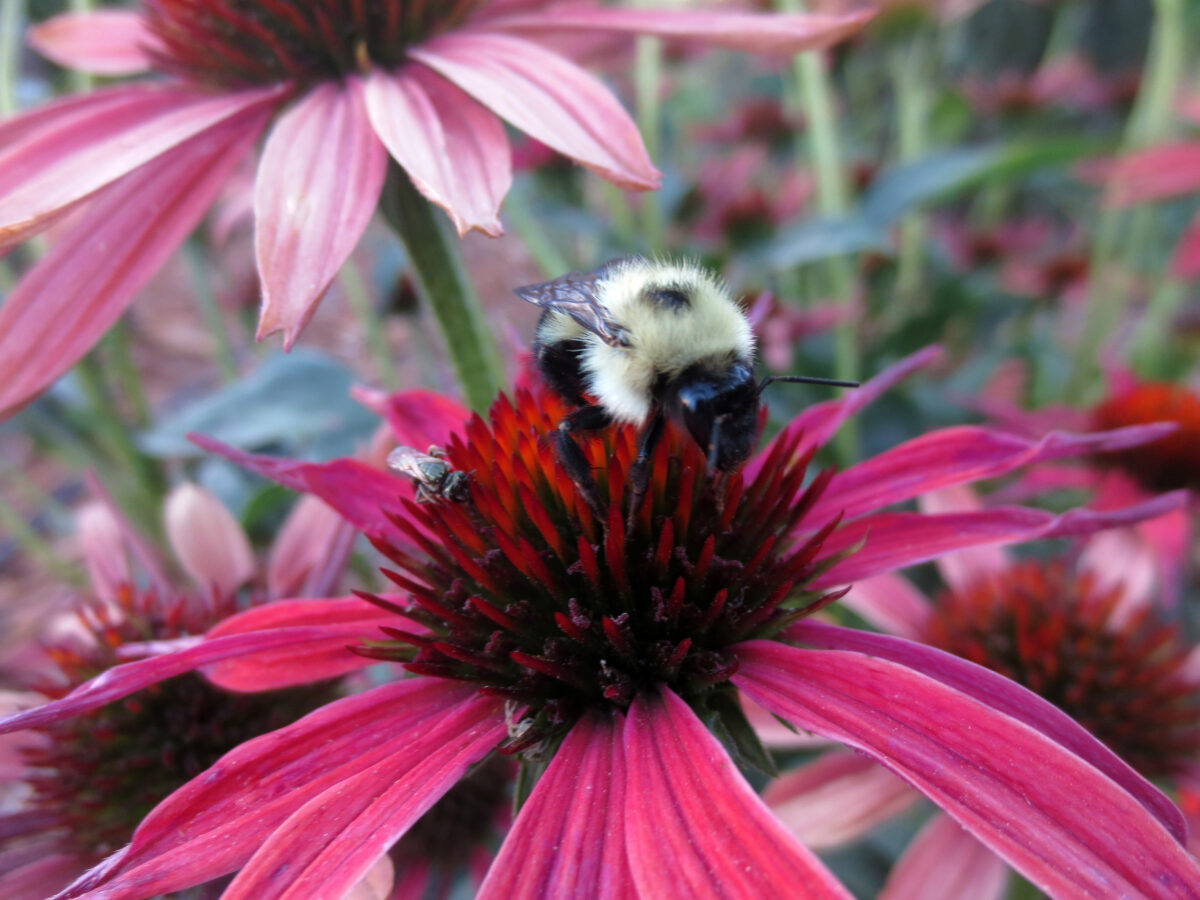
Barriers
The COVID-19 pandemic seriously hindered Fluegel’s outreach plans, which entailed inviting people to the test garden to directly observe how the plants attracted pollinators.
Designing an Information Booklet to Meet Growers' Needs
It's easier for me to create outreach materials than it might be for somebody who spends most of their time farming or doesn't want to play around with graphics, which I really enjoy. I thought about what a farmer or grower would want from this type of research and identified the specific pollinator a low-care plant will attract, which could be selected to support a particular crop."
—Susan Fluegel, Farmer Grantee
Contributors
Fluegel holds both master’s and PhD degrees in entomology and has significant research expertise. While she could have applied for a larger research grant from SARE, Fluegel opted to seek a farmer grant because she did not believe she had the time to recruit and collaborate with others—a requirement of SARE’s other grant types. Fluegel is also an educator with experience creating outreach materials. This skillset enabled her to create a very user-friendly resource booklet.
